Spirea Japanese "Darts Red": description, planting and care
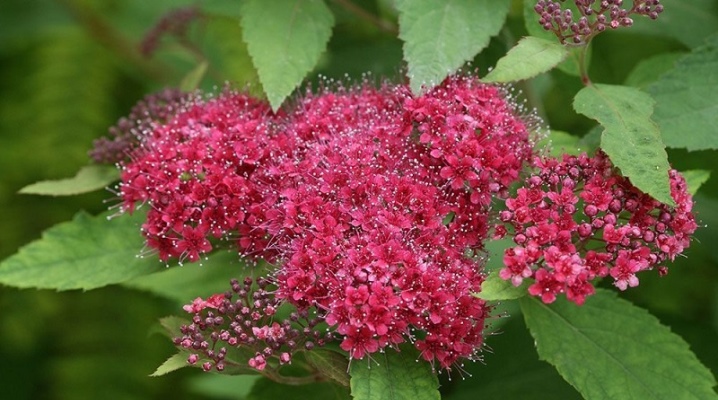
Nowadays, ornamental shrubs are often used in landscaping both small gardens and large parks. Gardeners appreciated the Japanese spirea of the Darts Red variety as such a decoration. Among the many advantages of the plant, it is worth highlighting its unpretentiousness, frost resistance and abundant flowering. Moreover, the beauty of this spirea can be observed throughout the summer.
"Darts Red" even tolerates not too clean air, which makes it possible to grow this variety in cities.
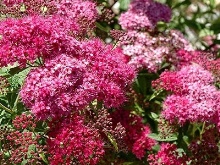
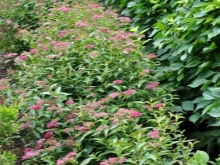
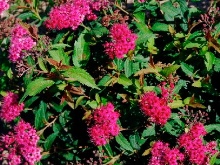
Peculiarities
Spirea "Darts Red" is a member of the Pink family and is an ornamental shrub. Among hundreds of species of spirea, it is the Japanese that stands out the most. The small size of the plant and its brightness are popular with many gardeners. It is worth noting that in the post-Soviet expanses, spirea is more often known as meadowsweet.
The description of the Darts Red variety should start with the fact that the deciduous shrub is beautiful and graceful, which sets it apart from other varieties of this species. The fibrous roots of the plant are located close to the surface, reliably clinging to the soil. The height of the bushes does not exceed 80 centimeters. Among the Japanese spirea, the Darts Red variety is considered undersized, since most of these plants grown in gardens reach only 50 cm. The diameter of the bush can reach a meter or more.
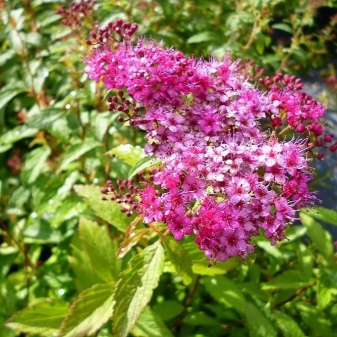
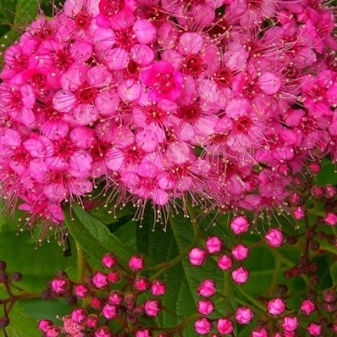
Thin shoots stand upright and form a beautiful crown. Most often, the branches have many branches, which makes the shrub very dense, with almost no gaps. Young shoots are red in color, but eventually turn green with a brown tint. Throughout the year, the plant can grow by an average of 10 centimeters. Notches protrude along the edge of the lanceolate leaves, and the top is slightly pointed. The average leaf length is 7 cm. During the season, foliage can change its color from muted red to bright green, and then to deep red.
The flowers of this variety are small in size. The buds have a bright pink color. However, when blooming, it turns red, like ruby, and sometimes even purple. Umbrella inflorescences are large and splendid. The shrub is able to bloom throughout the summer. However, with good care, it can bloom again in the first months of autumn. In place of faded inflorescences, fruits are formed that look decorative. It is in them that the seeds are located.
This variety of spirea perfectly tolerates even cold winters with temperatures of -30-40 degrees.
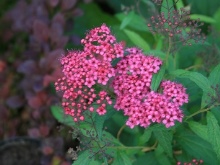
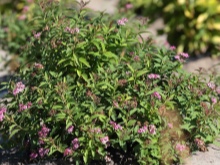
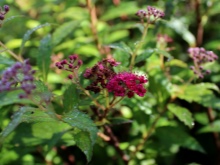
How to plant?
The most important thing is to choose a strong and whole seedling before planting, which will later turn into a beautiful bush. That is why it is better to purchase spirea in special garden stores or nurseries. It is worth stopping the choice on plants aged 2-3 years.
It is advisable to plant "Darts Red" in an area well lit by the sun throughout the day. The plant tolerates a little shade well, but at the same time it will not look as bright and luxuriant as in the sun. It should be borne in mind that spirea does not like drafts and strong winds. The soil should be fertile, loose and well moisturized.
Of course, the best option is sod or leafy soil with the presence of peat in it.
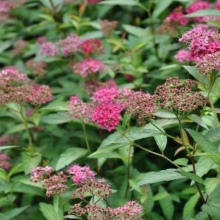
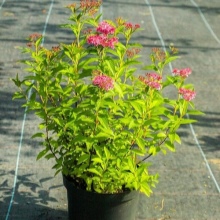
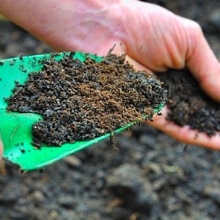
Soil preparation begins with digging up the soil and removing weeds and roots. After that, the soil must be loosened and leveled. Planting spirea, as a rule, is carried out in the first months of spring, before the buds bloom, or in the middle of autumn. It is advisable to choose a cloudy or slightly rainy day for planting. Pits for planting are made several times larger than the root system of the shrub. The hole must be at least 0.5 meters deep. When planting several bushes, it is important to maintain a distance of 0.4-0.7 meters between them. The bottom of the pit is covered with drainage, which will not allow moisture to stagnate at the roots.
For to make the soil more nutritious, you can add complex mineral fertilizers to it... For each pit, it is enough to add one tablespoon of such feeding. Immediately before planting, the container with seedlings should be watered so that it is easier to get them. It is necessary to lower the seedlings into the prepared grooves and cover them with soil so that the root collar is flush with the ground or slightly higher. Then the bushes need to be watered well, and mulch should be sprinkled around the trunk.
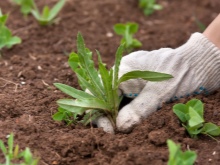

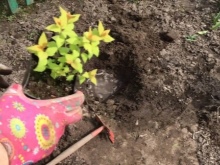
How to take care of it properly?
Caring for Japanese spirea is simple, which will especially appeal to novice gardeners. Watering should be carried out at least 2 times per season. It is necessary to pour at least 15 liters of water under one bush at a time. During the dry summer period, the amount of watering should be increased. Spirea shrubs need to be loosened regularly and removed from weeds. It is important to take into account that the root system is superficial and can be easily damaged if you do not show accuracy. Mulching the trunk circle with peat or dry leaves with a layer of 7 centimeters will reduce the number of waterings.
For rapid growth and abundant flowering, it is necessary to feed "Darts Red". In the spring, it is worth using mineral compositions for this, and in the summer months - a solution of cow dung. Regular pruning is done annually for shrubs aged 5 years or more. This procedure is carried out in the spring or autumn. Sanitary pruning involves removing weak or damaged branches. Periodically, the shrubs need to be rejuvenated, for which they are cut off almost completely. Despite the fact that this variety tolerates frost well, young shoots should be covered for the winter. Before that, they are huddled, and then the ground around the bush is abundantly sprinkled with peat or dry leaves.
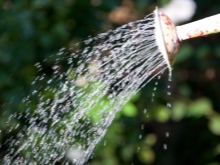
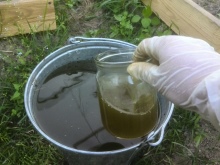
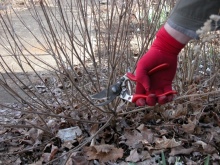
Reproduction methods
The main ways in which the Darts Red spiraea reproduces are have their own characteristics.
- Seeds spirea is rarely propagated, since as a result, a shrub may not have all the qualities of a certain variety. For this method, you will need high-quality planting material collected in the fall. It is necessary to sow seeds in a container with a mixture of sand and peat at the very beginning of spring. Then the soil should be well moistened. Cover each container with foil to speed up seed germination. They require constant care, which consists in timely ventilation and moistening of the soil. After 3 months, the seedlings can be planted in a permanent place.
Such a plant will bloom only in the third year from the moment of planting.
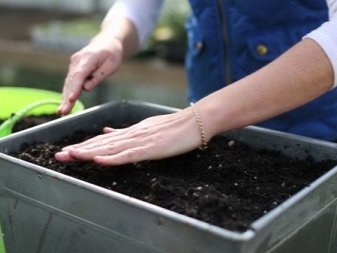
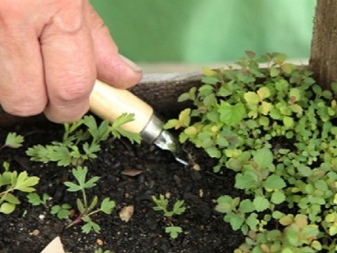
- For adult spirea bushes that are over 4 years old, suitable division as a breeding method... This should be done in the autumn months after the bush has shed all the foliage. The essence of the method is that the plant is dug up and divided into divisions. It is important to clear the roots of the soil before this. To divide the bush, you should choose a well-sharpened knife or pruner. Each delenka should have healthy shoots and a developed root lobe. Crushed coal must be applied to the sections. For planting, it is advisable to prepare the pits in advance. This is because the cuttings are best planted immediately after dividing.

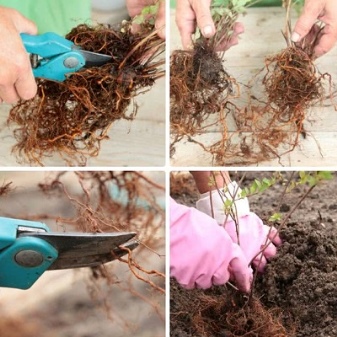
- The most popular among gardeners is grafting... Annual shoots or perennial branches of spirea bushes can be used as cuttings.Cuttings from annual shoots are rooted in July, and from lignified branches - in the first months of autumn. Each cutting should have at least 5 leaves. Preparing cuttings is reduced to removing most of the foliage from them. Then they must be placed in the Epin solution for 10-12 hours in order to increase the survival rate. It should be planted in containers with prepared nutrient soil with sand. The landing is carried out at a floor angle of 30-45 degrees. From above, the containers are covered with foil, put in the shade. Periodically, the cuttings are ventilated and moistened. For the winter period, containers should be placed in the ground and covered with foliage and a wooden box on top. When warm spring days come, the cuttings must be dug up and planted in open ground.
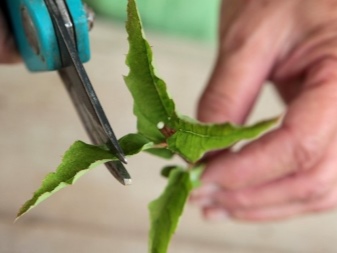
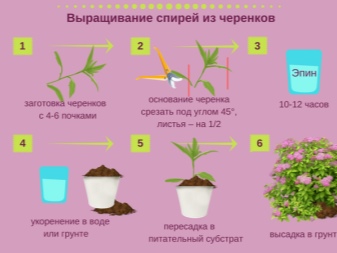
- Layers Japanese spirea is also bred quite often. In the spring, a young shoot is chosen on an adult plant, under which a shallow groove is made in the ground. The branch must be bent to it, covered with soil, and then secured with a bracket. Layers should be sprinkled so that the top of the shoot remains free from the ground. For the winter period, it is advisable to insulate the dug-in branches using dry leaves or straw. The next spring, the resulting seedling can be separated from the main bush and replanted.
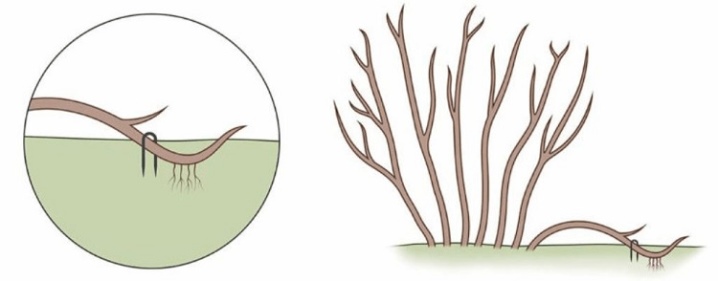
Diseases and pests
The Darts Red variety is quite resistant to both pests and viral diseases. Among the insects that pose the greatest harm to the plant, it is worth highlighting the spider mite. You can understand that this pest is attacking the plant by yellowing foliage, thin cobwebs on the shoots, small holes in flowers and leaves. Shrubs can be protected with insecticides, for example, Fundazola, Ditan, Decis, Fitoverma, Karbofosa, Actellika... Also, experienced gardeners recommend spraying the spirea with a weak solution of Bordeaux liquid.
The bushes of the Darts Red variety are rarely sick, and even then among the diseases, spotting, as well as gray mold, is most often found. In such cases, it is enough to treat the plant with Fundazol or colloidal sulfur.
Preventive measures include moderate watering, thorough cleaning under bushes, and timely pruning.
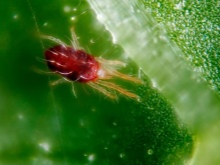


Use in landscape design
- Designers have come to love using the Darts Red spirea in the landscape for its small size and colorful appearance. Due to the long flowering, the shrub is suitable for lawns as single plantings. In a group with other flowers, the spirea also looks very good, especially if the neighbors have different shades.
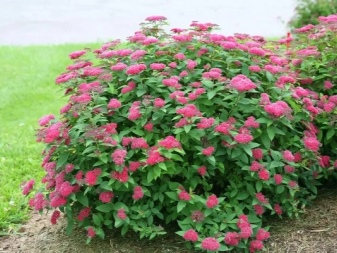
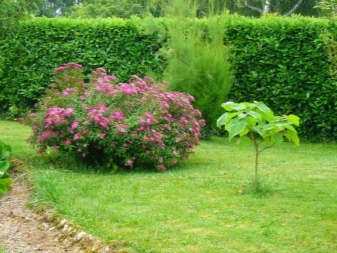
- An interesting option would be the combination of Darts Red with other types of Japanese spirea. However, in this case, it is precisely the undersized shrub that needs to be brought to the fore. Spirea will be a great addition to compositions of trees and large bushes, but it should be placed as the lowest tier.


- Dense branches intertwining into a dense crown are ideal for green hedges. Moreover, with their help, it is convenient to separate both whole areas, and simply to separate some zones. The Darts Red hedge around the perimeter of the entire site will look very impressive. You can often see this shrub in beddings and mixborders in combination with other plants. In rock gardens, you can also find a place for a bright shrub.
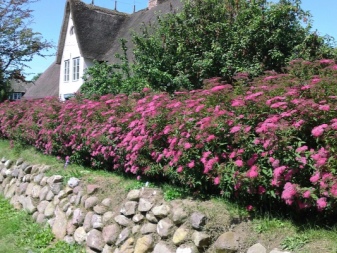

- As harmonious neighbors, you can choose chabushnik and lilacs for spirea. You can also decorate with a plant curbs or paths in the garden. You can create original compositions using various conifers, bulbous, barberry, St. John's wort, lavender, cinquefoil and other perennials and perennials.
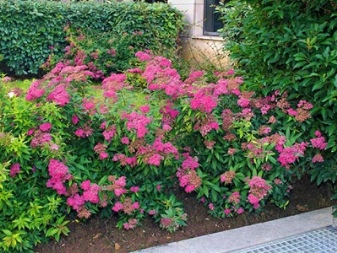
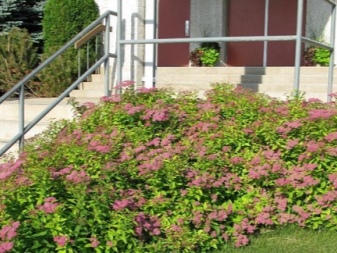
In the next video you will find a brief overview of the Japanese "Darts Red" spirea.



































































The comment was sent successfully.